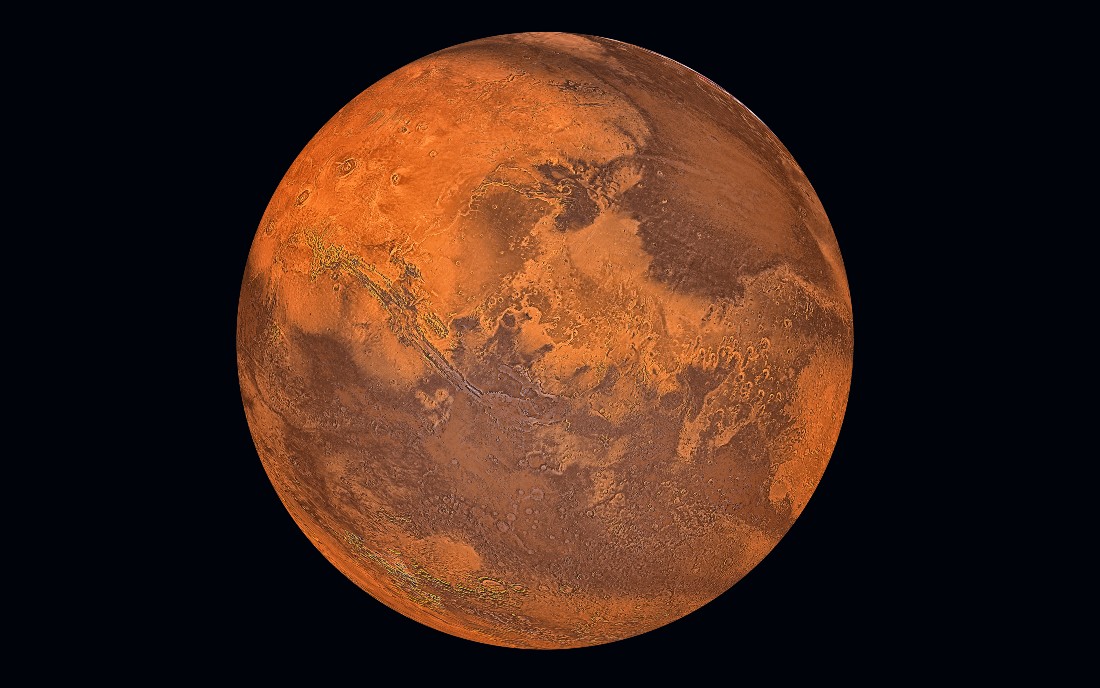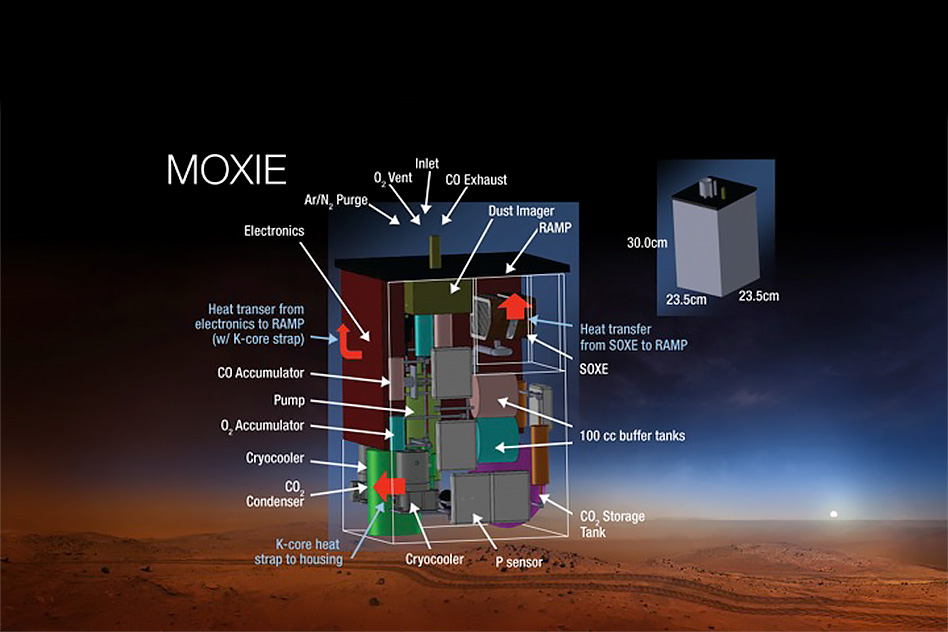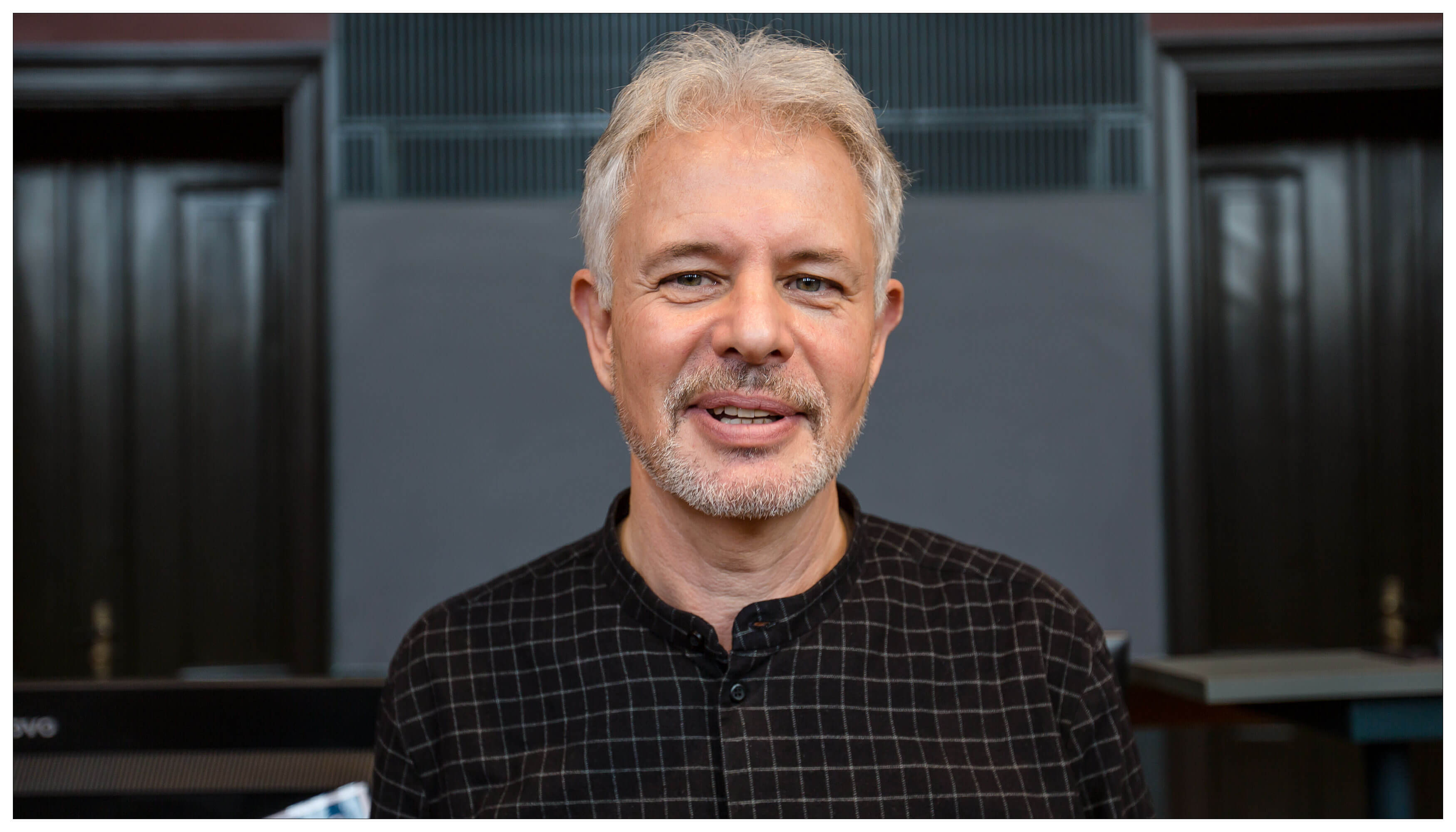Martian oxygen factory passes first major test
New results from the red and rocky surface of Mars have shown that MOXIE, an oxygen generator that Danish researchers from the University of Copenhagen and fellow institutions have been deeply involved with, has passed its first year of testing. A scaled-up version could be used to generate oxygen for the crew of astronauts that NASA is working hard to launch to Mars in the 2040s.

The MOXIE oxygen generator is roughly the size of a car battery. Since NASA's Perseverance Mission landed on Mars last February, its job has been to prove that oxygen production on Mars is possible.
With dust storms, temperatures as low as minus 140 degrees Celsius, heavy g-forces and an epic journey through space, University of Copenhagen researchers, among others, have been curious whether the design of MOXIE (Mars OXygen In-Situ Resource Utilization Experiment) was good enough.
So far so good. MOXIE has now produced 50 grams of oxygen on the oxygen-poor surface of Mars – enough to keep an astronaut alive for an hour and a half.
This is good news for NASA, who plan on sending humans to Mars in the 2040s, according to Associate Professor and astrophysicist Morten Bo Madsen from the University of Copenhagen’s Niels Bohr Institute. Madsen has been part of the scientific team behind MOXIE since 2013.
"MOXIE has survived the powerful shaking of both launch and landing and now proven that it can produce oxygen by solid-state electrolysis directly from the Martian atmosphere while operating in the planet’s often hostile environment. We’ve also learned a lot more about how MOXIE could be optimized and how it could be scaled up to produce enough oxygen for human missions, which is a big step forward," says Morten Bo Madsen.
Experiences from MOXIE’s first tests have just been published in the scientific journal Science Advances. Link to PDF.

Astronauts must be able to breathe and get back home
Only 0.13 percent of the Martian atmosphere is made up of oxygen, while 95 percent of it is composed of carbon dioxide. MOXIE sucks carbon dioxide out of the atmosphere into what Morten Bo Madsen calls "the heart of the machine" – a kind of reverse fuel cell.
Here, MOXIE splits the carbon dioxide molecules apart, which contain one carbon atom and two oxygen atoms. It then stores the oxygen. The energy required by MOXIE to split molecules and store oxygen comes from a relatively large rechargeable battery. For human missions, a much larger energy source will be needed.
"3,000 grams of oxygen per hour must be produced non-stop, for 14 months in a row, for six astronauts to be able to live on a base, explore the planet and, not least, get them home again. Here, it would be possible to use a small nuclear power plant, like those used in submarines, to supply a larger version of MOXIE with power. Another alternative NASA is looking into is the development of more advanced units that could convert heat from radioactive sources into electricity, so-called 'kilopower reactors'," explains Morten Bo Madsen.
According to the researcher, the larger "factory" version of MOXIE will probably be one to two cubic meters in size and will need to be flown to Mars and put into service at least 26 months before any astronauts launch from Earth. This is because the oxygen generator will not only provide the astronauts breathable air on Mars, it will also allow them to refuel and lift off from the planet and head back to Earth when their mission is over.
"The plan is for the machine to produce all of the oxygen that the astronauts need for the mission in advance, so that prior to leaving Earth, we know that they can survive on Mars and get home. By far, it is most economical to produce oxygen on Mars, as opposed to bringing it from Earth," says Madsen.

MOXIE technology can be used in the green transition
The MOXIE experiment is an example of one of several technologies that, according to Morten Bo Madsen, could be used in the green transition.
"The technology used to capture CO2 from the Martian atmosphere could also be used down on Earth to convert electrical energy from wind turbines and solar cells into chemical energy, which could either be converted back into electrical energy when needed, or as a starting point for producing liquid fuels for aircraft, ships and other means of transport," says the researcher.
Both DTU Energy and Topsøe are working to develop these green transition technologies.
The researchers will continue testing MOXIE in every conceivable Martian scenario – hopefully including a dust storm – and analyze the data they get back from the oxygen generator fitted into the Perseverance Rover.
Contact
Morten Bo Madsen
Associate Professor of Astrophysics and Planetary Science
Niels Bohr Institute
University of Copenhagen
+45 45 26 79 54
Email: mbmadsen@nbi.ku.dk
Michael Skov Jensen
Journalist and team coordinator
The Faculty of Science
University of Copenhagen
+ 45 93 56 58 97
msj@science.ku.dk
